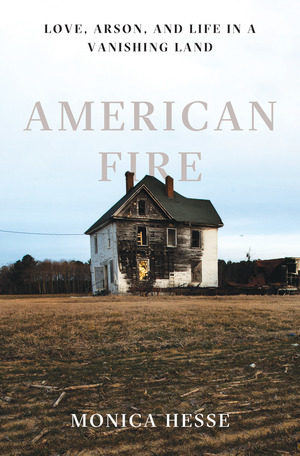 Okay, so, I'm gonna confess that I thought this book was about climbing a mountain, primarily because the edition I read had a mountain, or very large mountain-like rock, on the cover, and I interpreted the "heaven" in the title as "the sky." You know, like the heavens? No, I was not confusing it with Krakauer's Into Thin Air, which actually is about climbing a mountain, namely Mount Everest. I've read Into Thin Air, and my enjoyment of it (as well as of Missoula) was why I picked this up in the audiobook format. Imagine my surprise when it started out by talking about a murder! Well, that was okay, too, because I love true crime; it's awful, but fascinating at the same time.
Okay, so, I'm gonna confess that I thought this book was about climbing a mountain, primarily because the edition I read had a mountain, or very large mountain-like rock, on the cover, and I interpreted the "heaven" in the title as "the sky." You know, like the heavens? No, I was not confusing it with Krakauer's Into Thin Air, which actually is about climbing a mountain, namely Mount Everest. I've read Into Thin Air, and my enjoyment of it (as well as of Missoula) was why I picked this up in the audiobook format. Imagine my surprise when it started out by talking about a murder! Well, that was okay, too, because I love true crime; it's awful, but fascinating at the same time.Krakauer starts the book by discussing a gristly double murder committed by two brothers, Ron and Dan Lafferty, with the victims being their sister-in-law Brenda and her daughter Erica. Though Ron committed suicide in prison after being convicted, Dan maintained that, while he committed the murders, he shouldn't be considered "guilty" of them because he killed his sister-in-law and her daughter under orders from God. Hm... Then Krakauer goes into the body of the book, which alternates chunks about the events leading up to the murder, the murder, and what followed it, with historical pieces about the founding of the Church of Jesus Christ of Latter-day Saints, aka the Mormon church. Why is the Mormon piece so important? Because the Lafferty brothers belonged to a fundamentalist splinter group of it which subscribed to tenants that the main Mormon church has pushed to the wayside, such as plural marriage, and one of the reasons they wanted to kill Brenda was because they thought she convinced Ron's wife to leave him after he wanted to take a second wife. Ah, yes, polygamy--this book has it.
Krakauer blantantly says towards the beginning of the book that the main, modern Mormon church is not a problem, but that the problems he examines stem from fundamentalist groups that stem from it--just as all religions have problematic fundamentalists. (Yes, all.) The only times he talks about the main church is in a historical context, when he goes into its foundation, which seems pretty kooky but problems seems so because, as Krakauer points out, it was just founded much more recently than most religions. And then he goes into the integration of polygamy into the church's practices, which really seems like it happened because the founder, Joseph Smith, wanted to bang a lot of women who weren't his wife and wanted his wife to just shut up and accept it, and a bunch of other guys high up in the church decided they wanted to do that, too. This was a problem. Is polyamory a problem? No, as long as all members are consenting. But Krakauer digs into how a solid policy of it led to rampant sexual abuse, rape, and incest, which women literally couldn't say no to because the men in charge told them all it was God's will, and they could be excommunicated, losing their families and entire lives, if they refused to go along. It's this policy and these awful practices which still abound in the splinter fundamentalist groups that Krakauer discusses in the contemporary part of the book.
This is a riveting story on all fronts, and Krakauer is an excellent nonfiction writer to record it. There is a bit of a structure issue with it, however, because he goes and tells a lot about the murders of Brenda and Erica right in the prologue, which means that for much of the contemporary chunks of the book, I was just waiting for something to happen that I already knew was going to happen. I think this might have been a bit better if Krakauer had let us know that something had happened, but left the "reveal" for where it fit in the body of the main book, rather than in the prologue. That would have let us know that it was building up for a purpose, not just rambling, but still had something to "surprise" us with. He also tries to go into all sorts of terrorism comparisons in the end, which seemed like reaching far. Does it tie into the topic? Yes. However, I don't think it was the right place in this particular story, especially because there's no good answer for the question that Krakauer wants to examine by bringing a terrorism component into play--namely, if someone has religious convictions, can we count them as delusional, and in any case, if they commit a crime based on those convictions, can we hold them guilty?
Still, the body of the book, before it dives into trial transcripts and metaphysical ponderings at the end, was excellent. I really like Krakauer and hope to read his other books as well.
4 stars out of 5.









